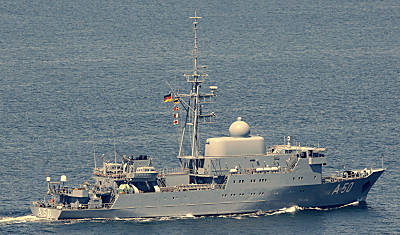WASHINGTON, Oct. 5, 2011 — The United States is “0 for 4” in managing defense drawdowns, and can draw four lessons from those past failures, Deputy Defense Secretary William J. Lynn III said today on his final full day in office.
Lynn, who will turn over the job to Ashton B. Carter tomorrow, offered advice on national security in times of budget austerity in a keynote speech at the Center for American Progress here. Security begins with a strong economy, Lynn said, and the nation’s current deficit crisis demands action. Strong measures and painful cuts are called for, and defense cuts must be part of a solution, he acknowledged.
The central challenge, Lynn said, is managing a defense slowdown without endangering national security.
“Our ability to exert global influence will be threatened if we do not reduce the deficit,” Lynn said. “No great power can project military force in a sustained manner without the underpinnings of a strong economy.”
While the economy is the wellspring of the nation’s military might, past efforts to strengthen the nation’s budget through defense cuts have resulted in fiasco, he said.
Military drawdowns after World War II, Korea, Vietnam, and during deficit-reduction efforts in the 1980s all caused disproportionate loss of military capability, Lynn said, citing the first engagement of the Korean War: the 1950 Battle of Osan, better known as “Task Force Smith.”
Less than five years after the defeat of the Axis powers, Lynn recounted, “Teenagers fresh from basic training, led by officers who lacked combat experience, found themselves facing a numerically superior North Korean force. With only 120 rounds of ammunition each, two days of C‑rations [and] six antitank shells, our forces were simply unable to stop the North Korean advance.”
The resulting debacle led to the deaths of many young Americans, he added.
“Each time we reduced the defense budget, we created holes in our military capabilities that we had to buy back later at great cost,” he noted. “When we were lucky, that cost was in dollars; when we were not lucky, that cost was in the lives of our troops.”
Lynn said he draws four lessons from previous large defense cuts:
— Make hard decisions early;
— Admit the need to eliminate missions and programs;
— Keep reductions balanced among force structure, operating accounts and investment accounts; and
— Don’t cut too much too fast, especially in core mission areas.
Postponing cuts to lower-priority programs in hopes of higher budgets later is “reckless and intemperate behavior,” Lynn said, and would divert precious resources from higher-priority needs.
“The net result is wasted spending and less capability,” he said. “It is better to have a smaller, but more ready, force and fewer, but healthier, programs.”
Accommodating current budget reductions, which Lynn identified as “north of $450 billion over 10 years,” will force difficult choices in force structure, modernization and personnel, he noted.
The deputy secretary said the Defense Department must reduce troop levels while retaining the ability to configure forces for emerging threats, trim modernization programs while preserving key cybersecurity and long-range strike capabilities, reduce the civilian workforce while avoiding demoralizing furloughs, and make sensible adjustments to military pay and benefits without breaking faith with military members and their families.
Defense leaders acting judiciously can make those cuts without endangering the nation’s security, Lynn said.
Under the Budget Control Act of 2011, the so-called congressional “supercommittee” — the Joint Select Committee on Budget Reduction — must by Nov. 23 recommend steps to reduce the deficit by $1.5 trillion over the next 10 years. If the committee doesn’t make such a recommendation, a sequester mechanism built into the act will trigger $1.2 trillion in additional spending cuts. DOD would then face more than $1 trillion in cuts over 10 years, which would be “catastrophic,” the deputy secretary said.
“Sequestration would leave us with the smallest Army and Marine Corps in decades; the smallest Air Force in history, and the smallest Navy since [William] McKinley was president,” he noted. McKinley’s administration ran from 1897 to 1901.
“The mindless process of sequester would force us to make equal cuts to every program, regardless of their impact or the priority of that program,” he added.
Having served at the Pentagon as director of program analysis, comptroller and deputy secretary, Lynn said, he has learned one thing above all else: “Serial and disproportionate reductions to discretionary spending have disastrous results. You cannot plan a defense program and build a strategy around a moving target.”
Source:
U.S. Department of Defense
Office of the Assistant Secretary of Defense (Public Affairs)

 von
von 